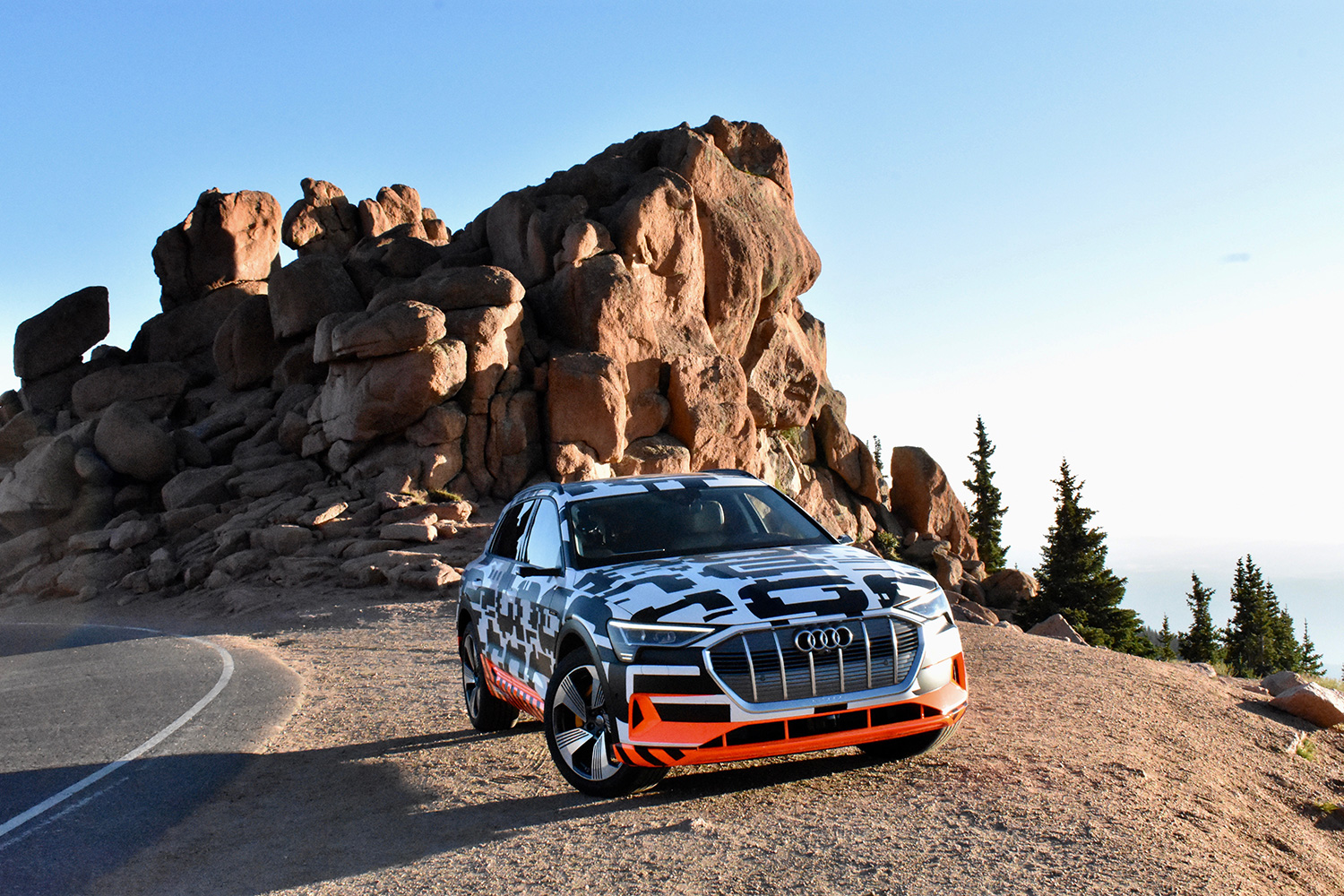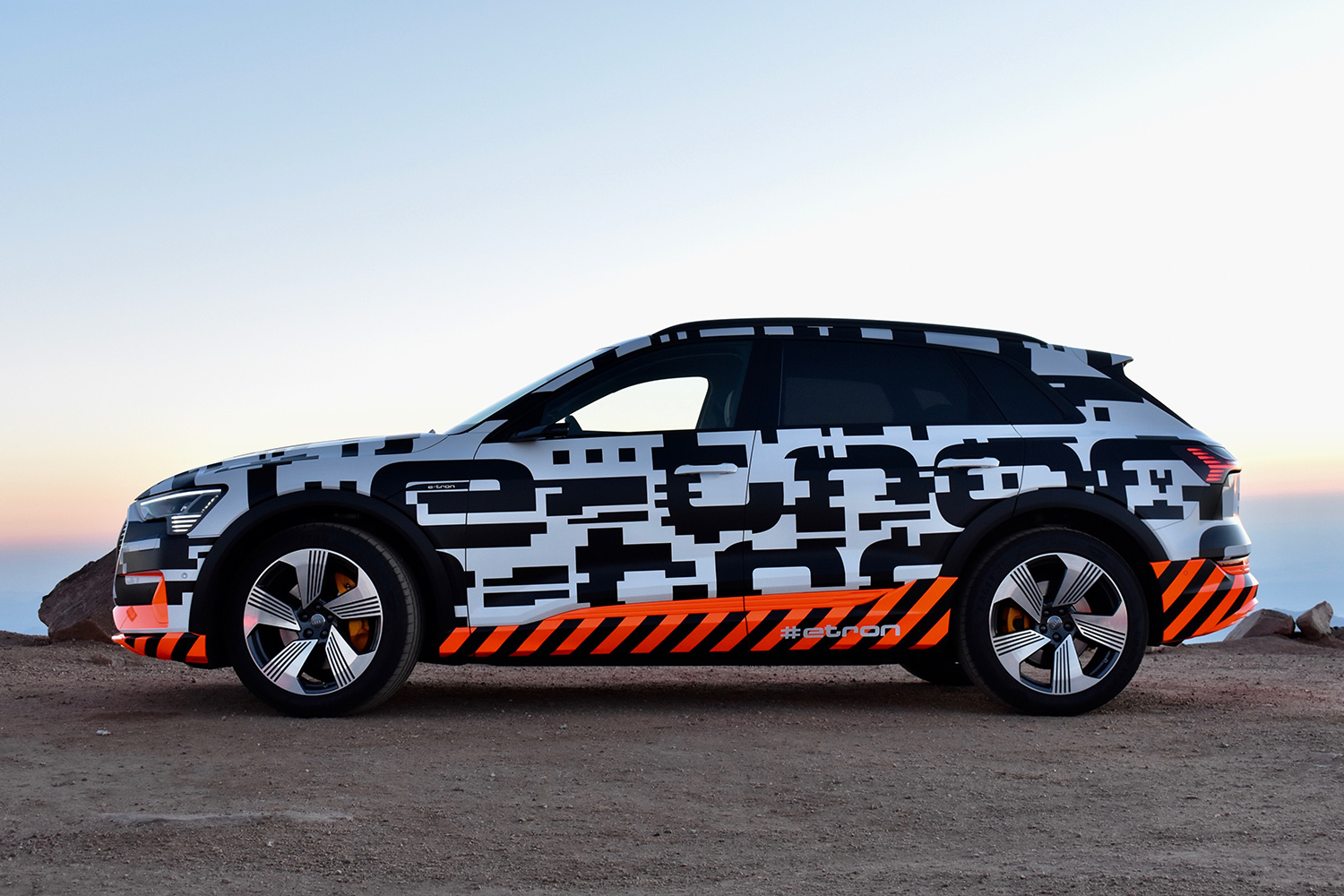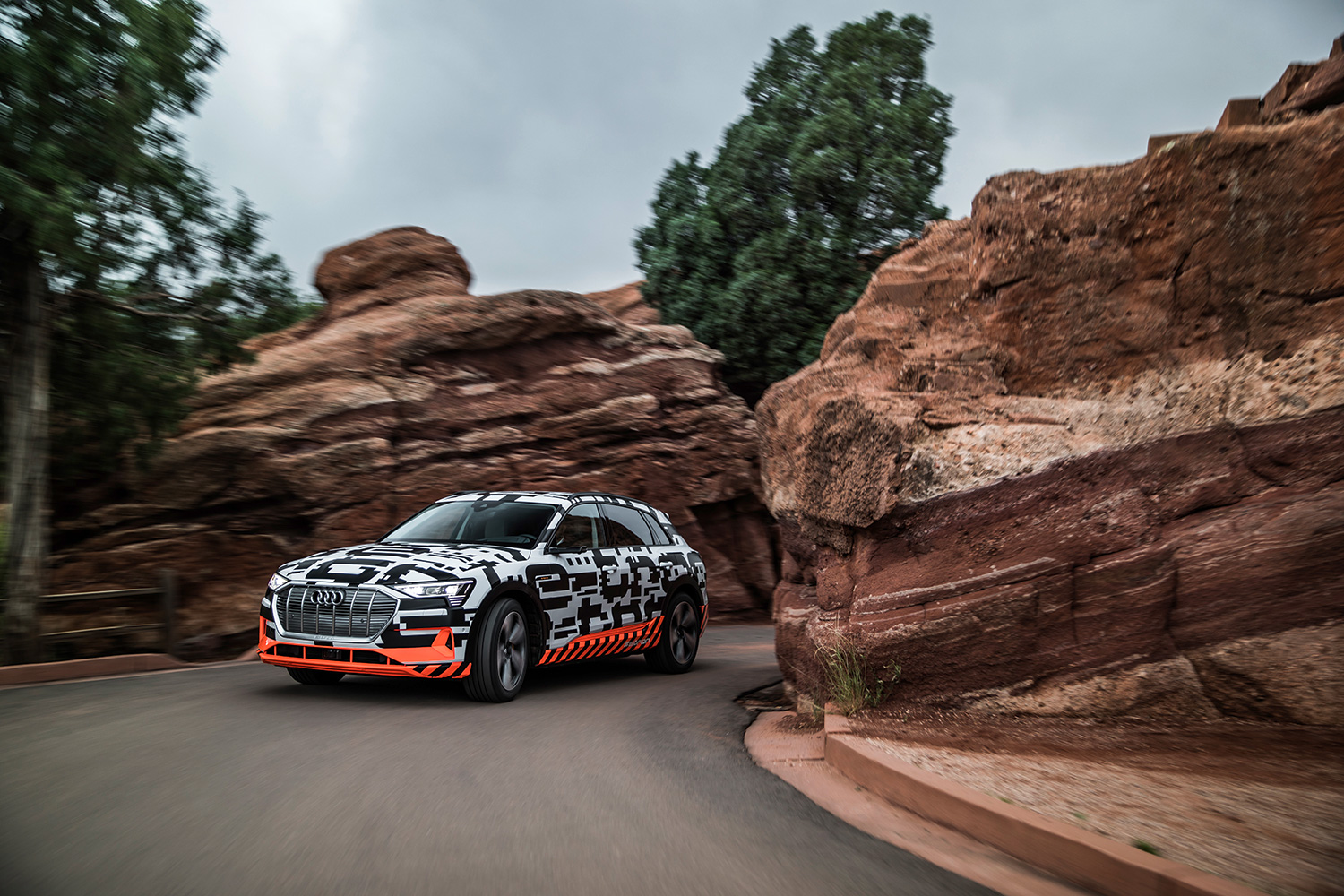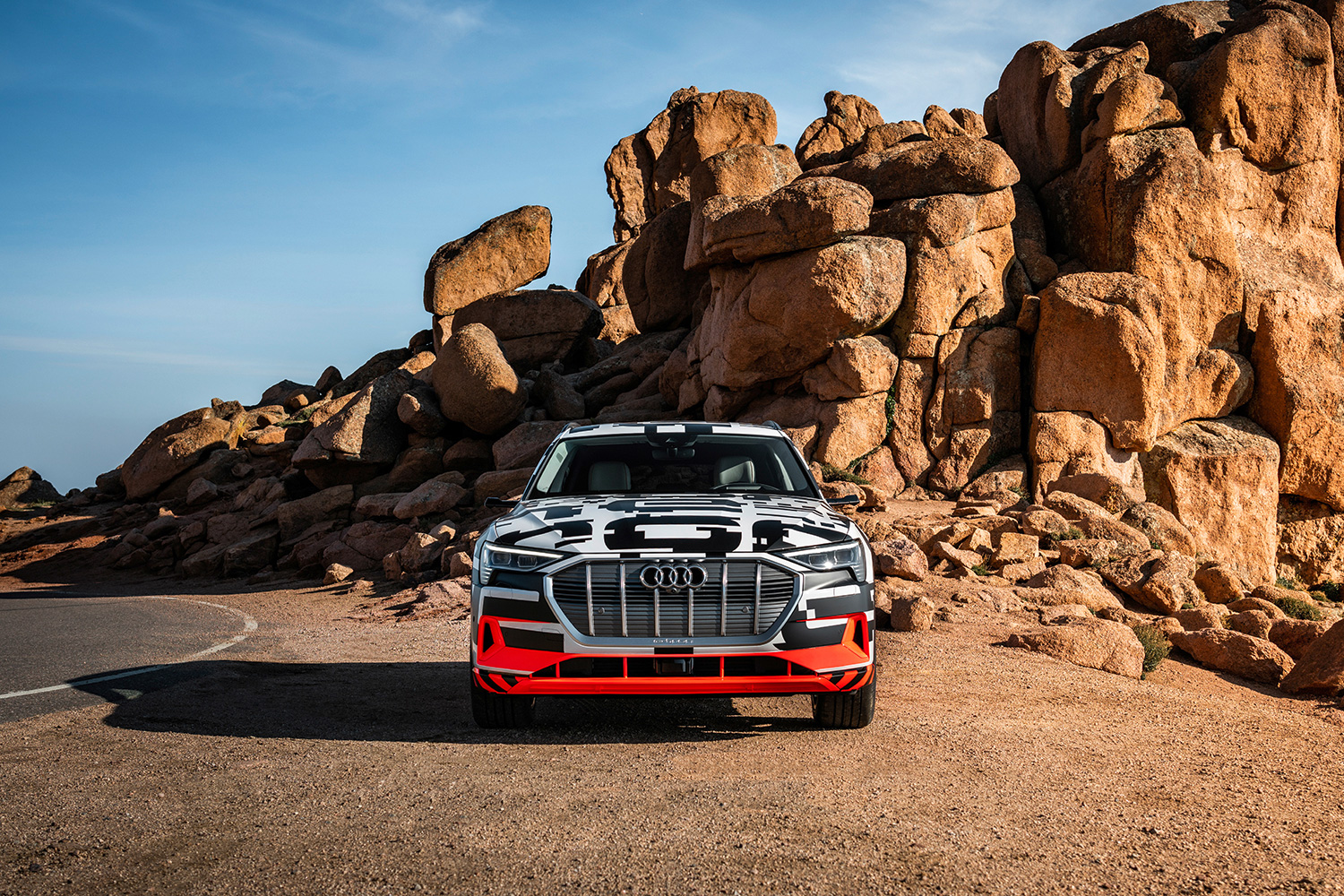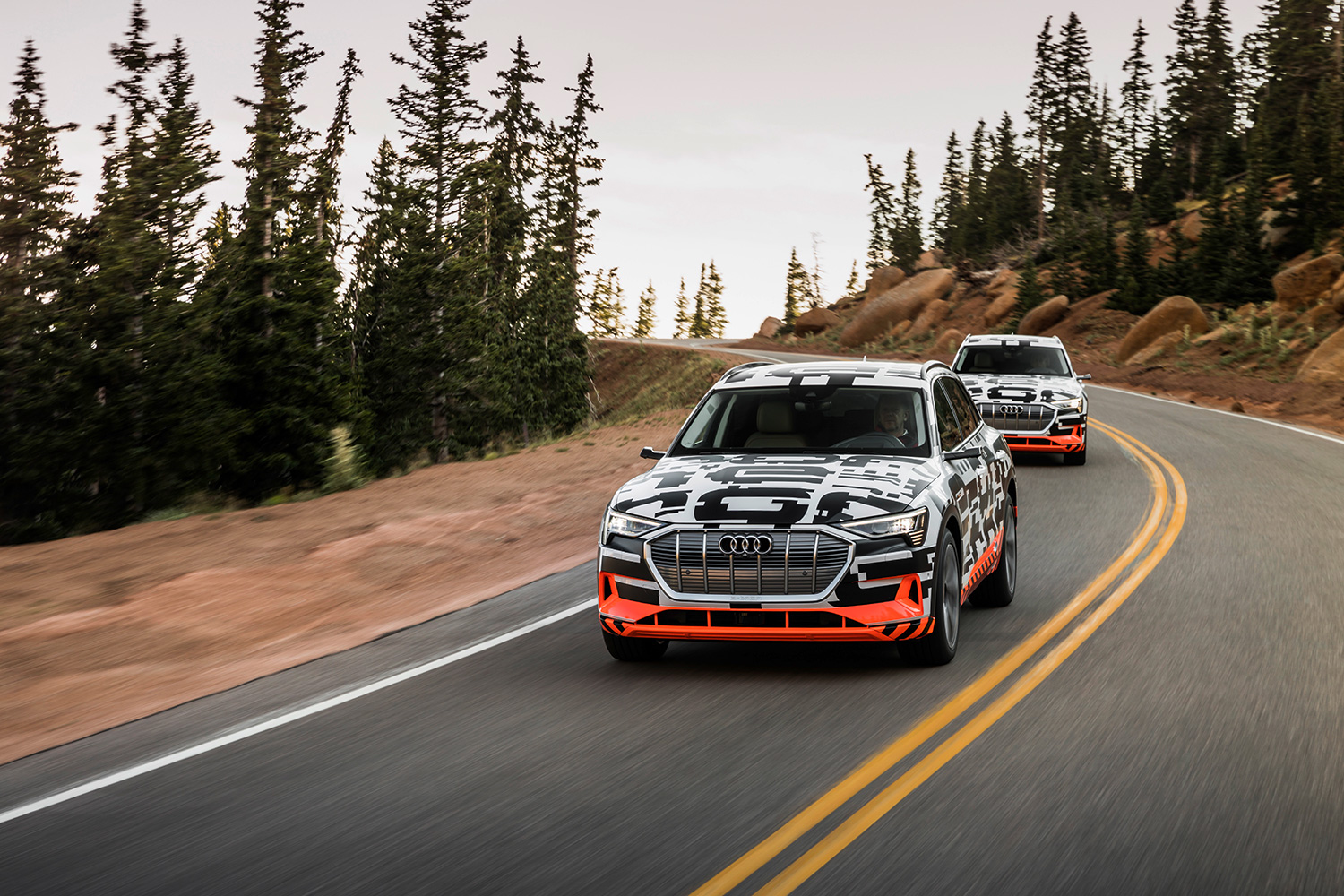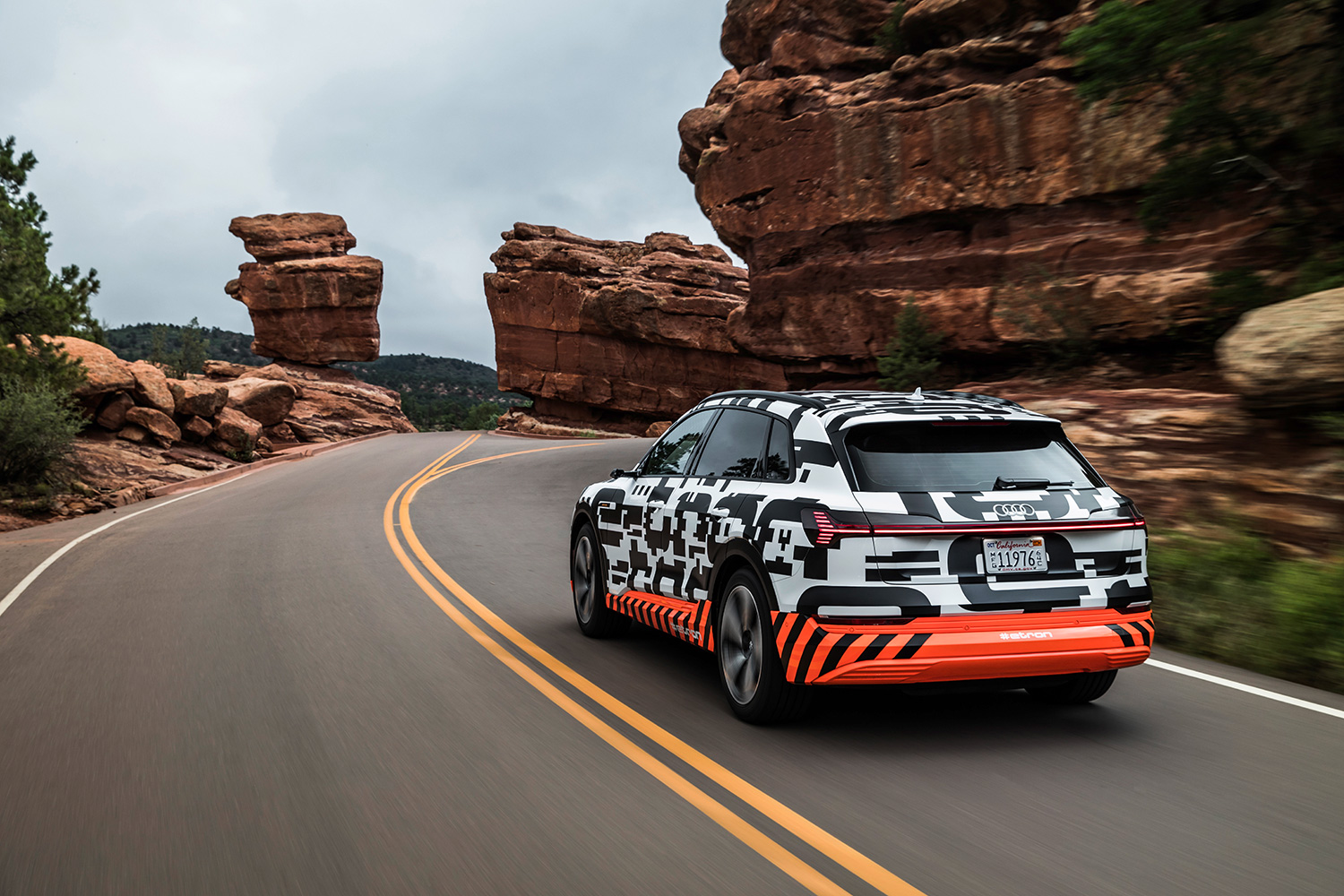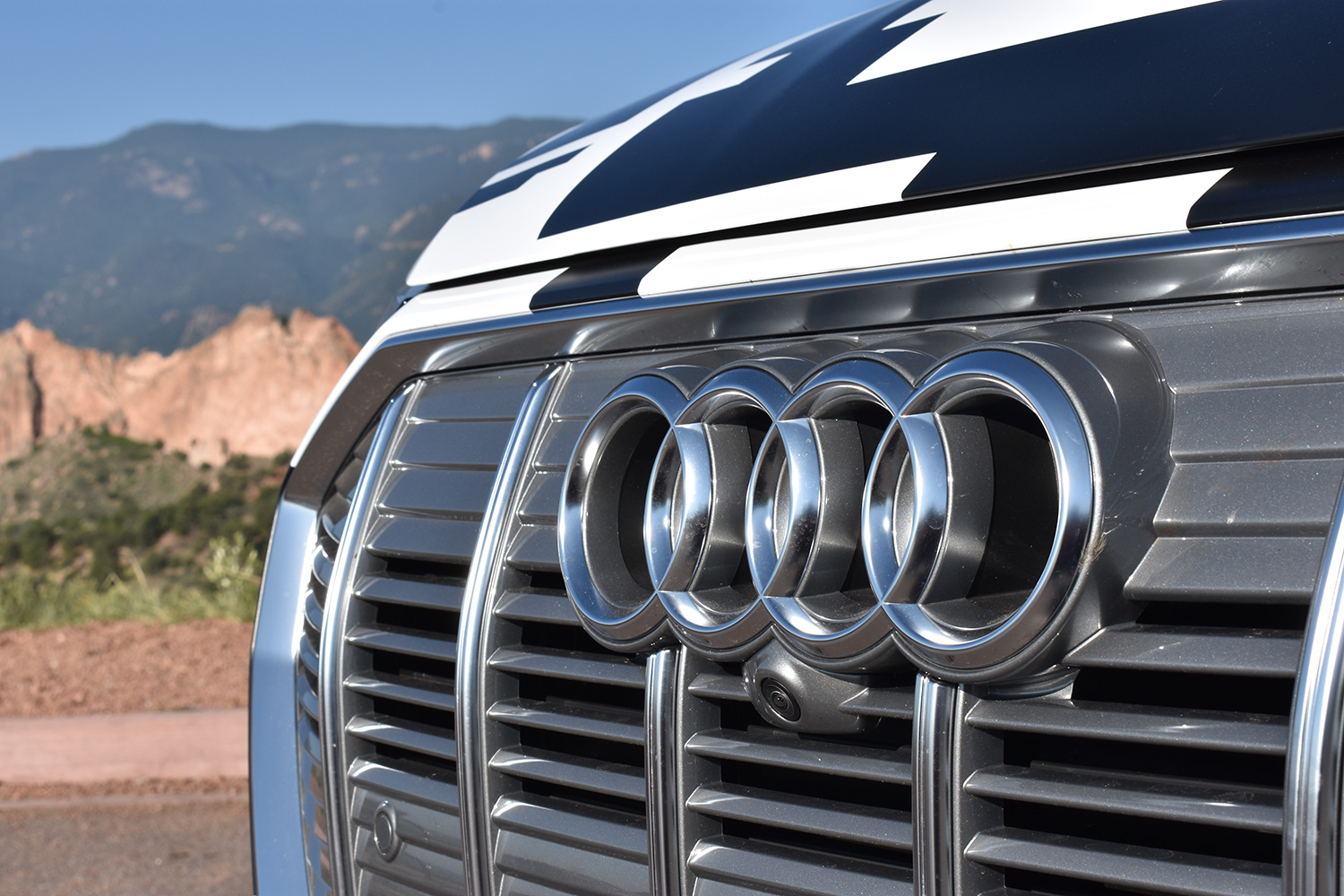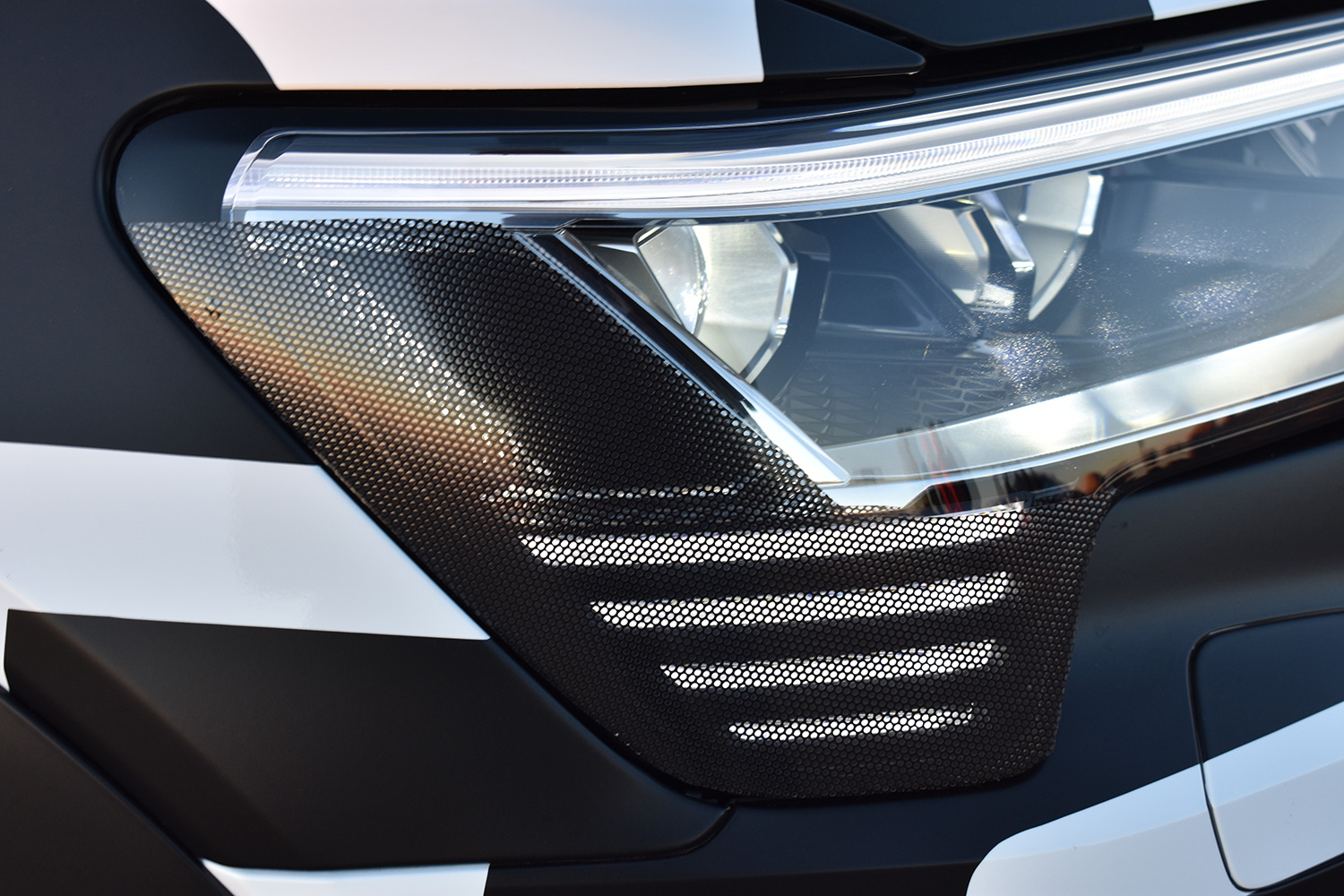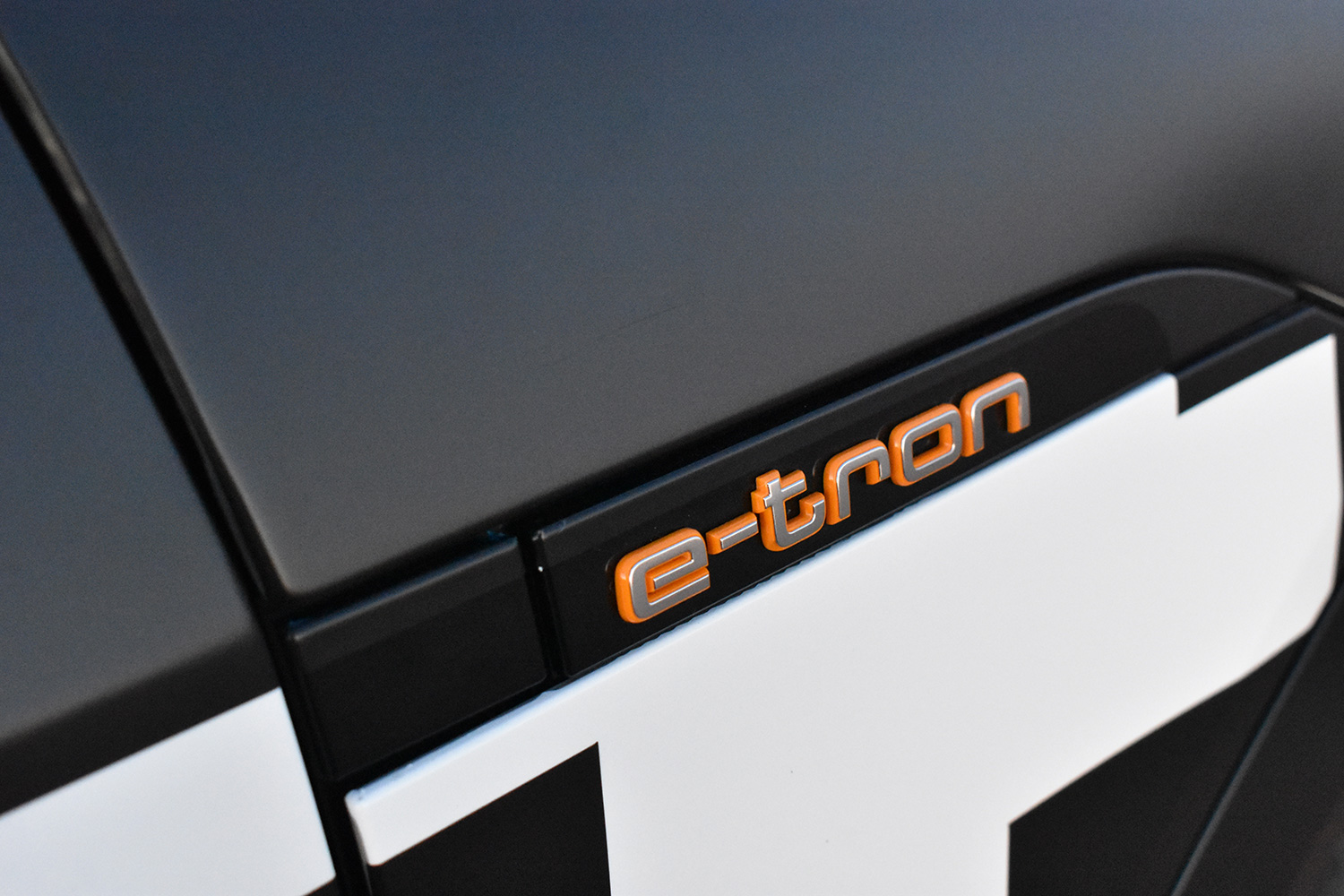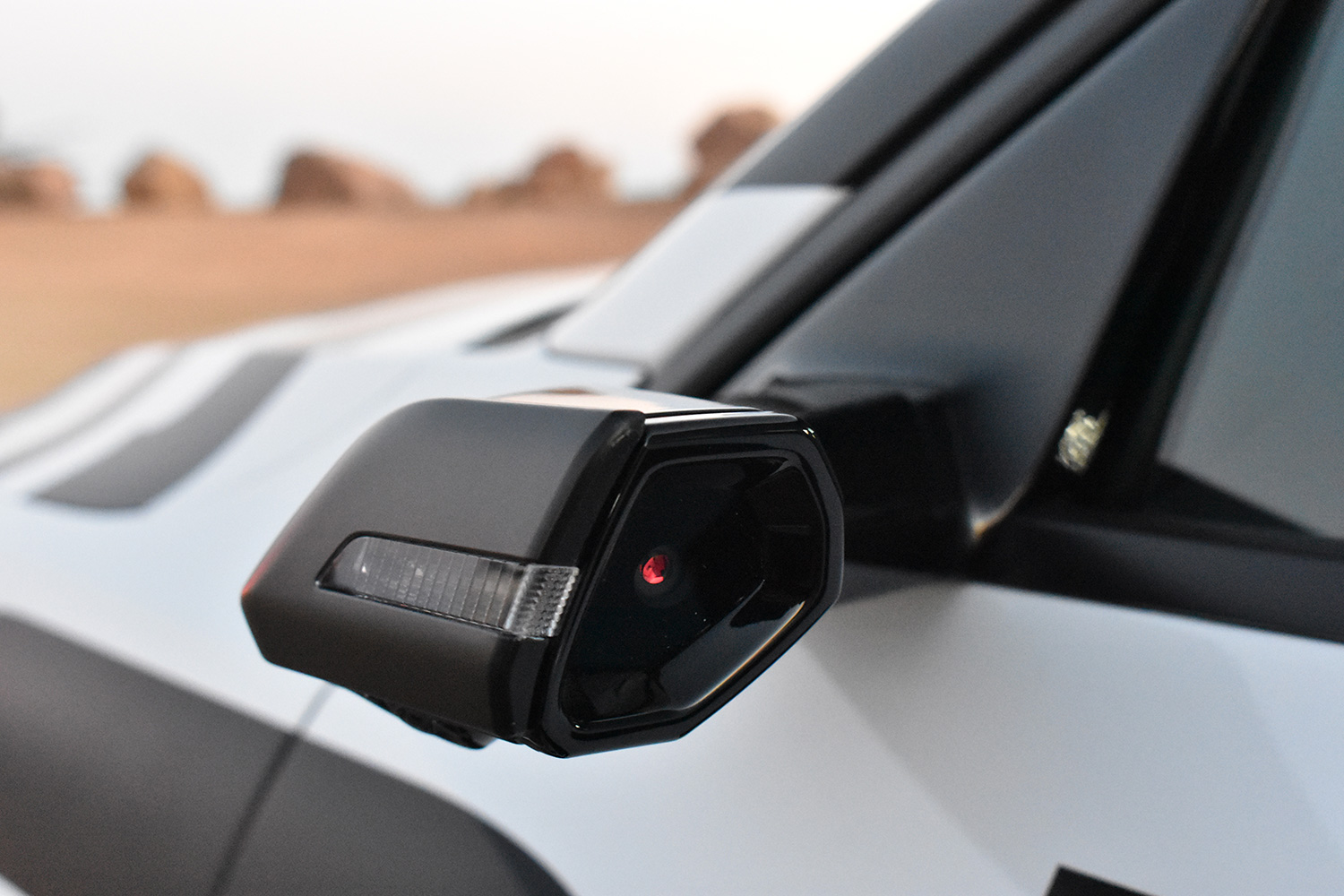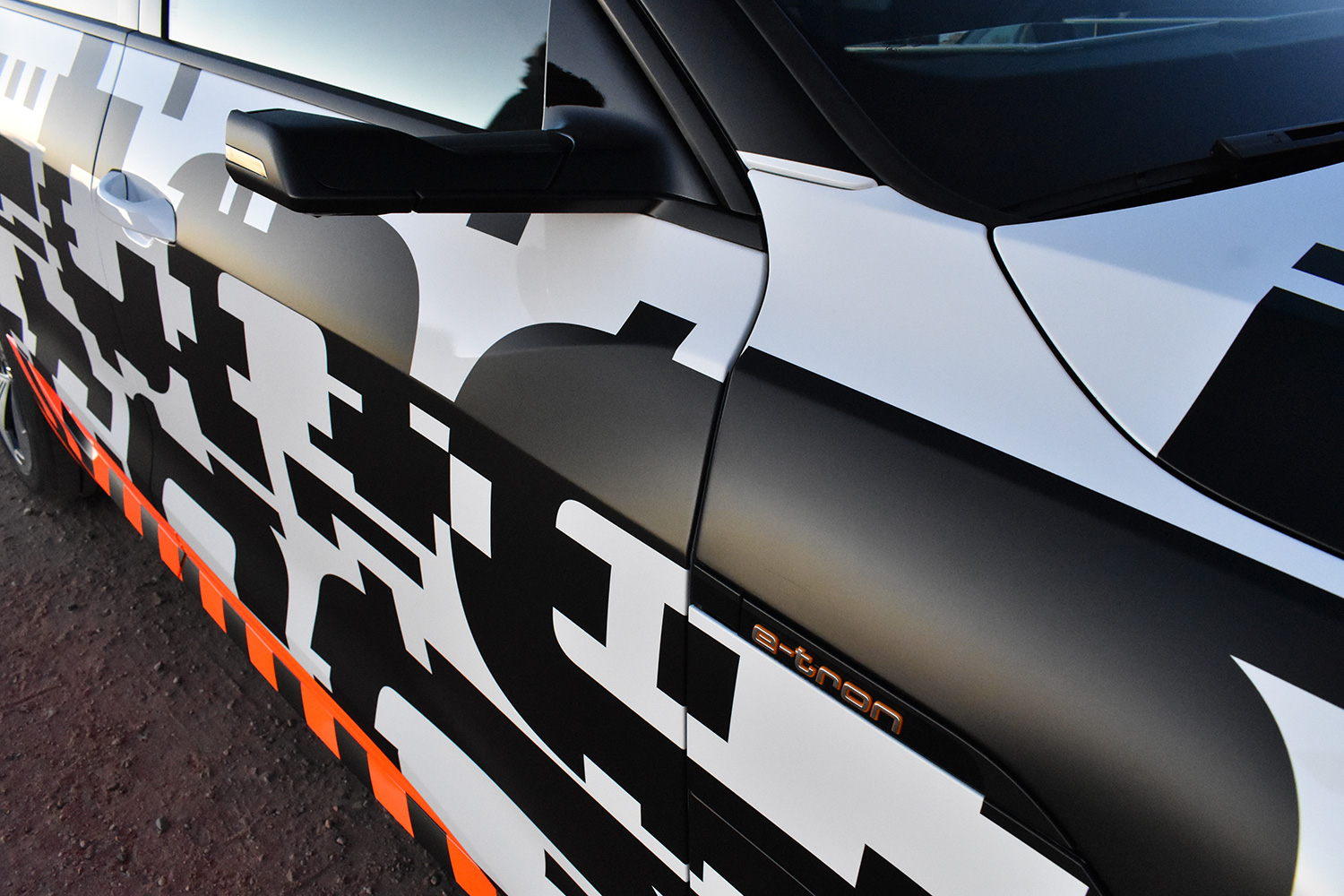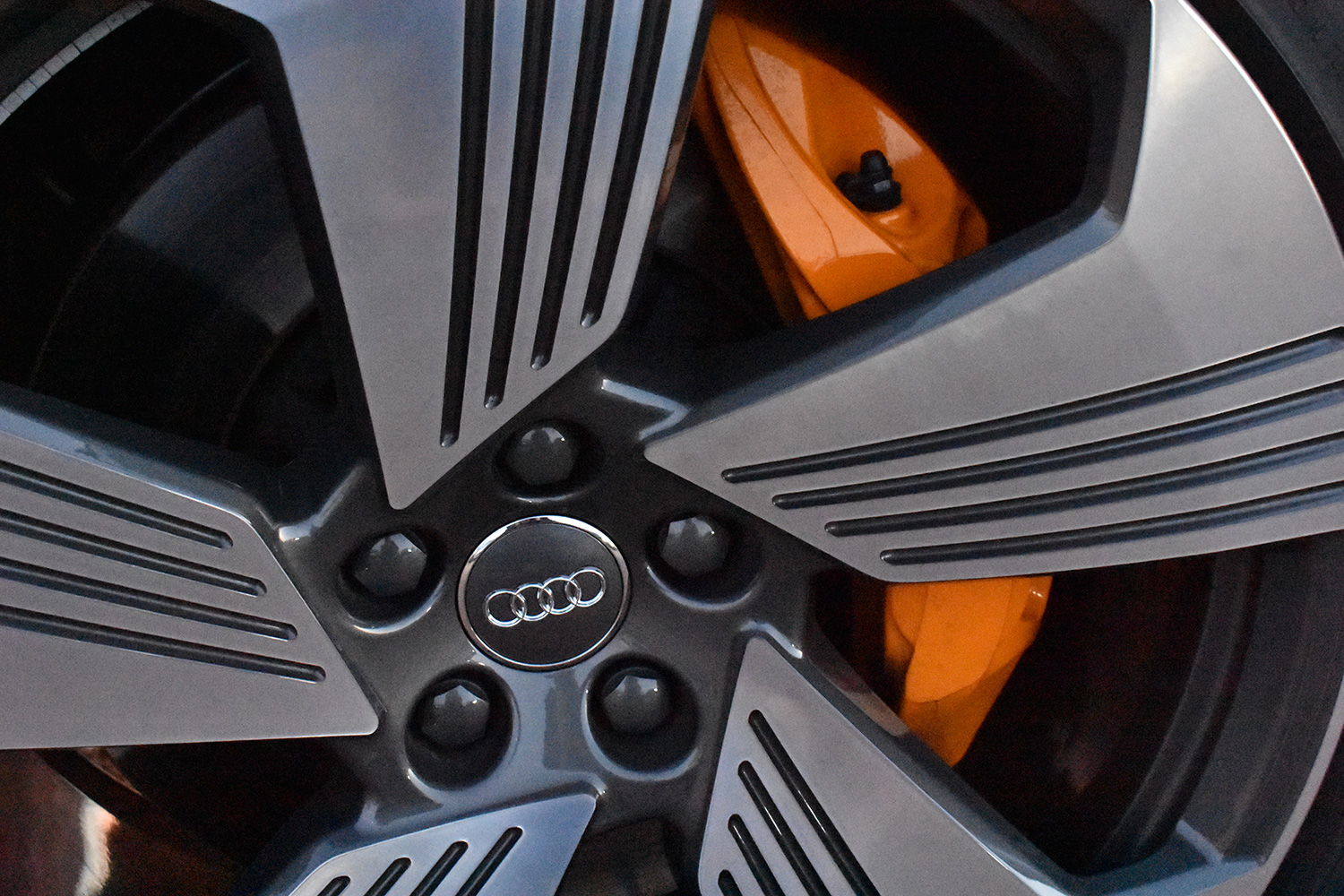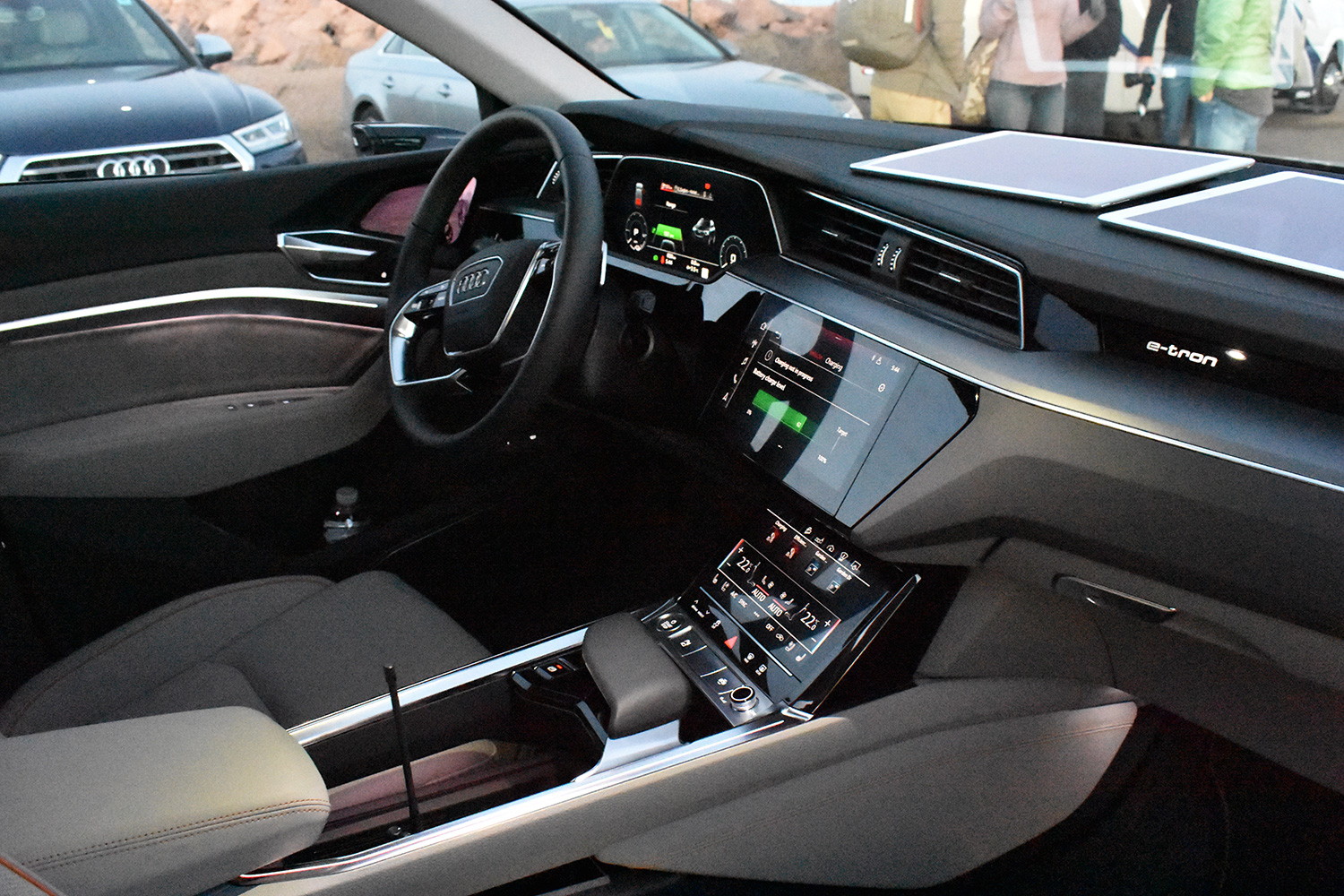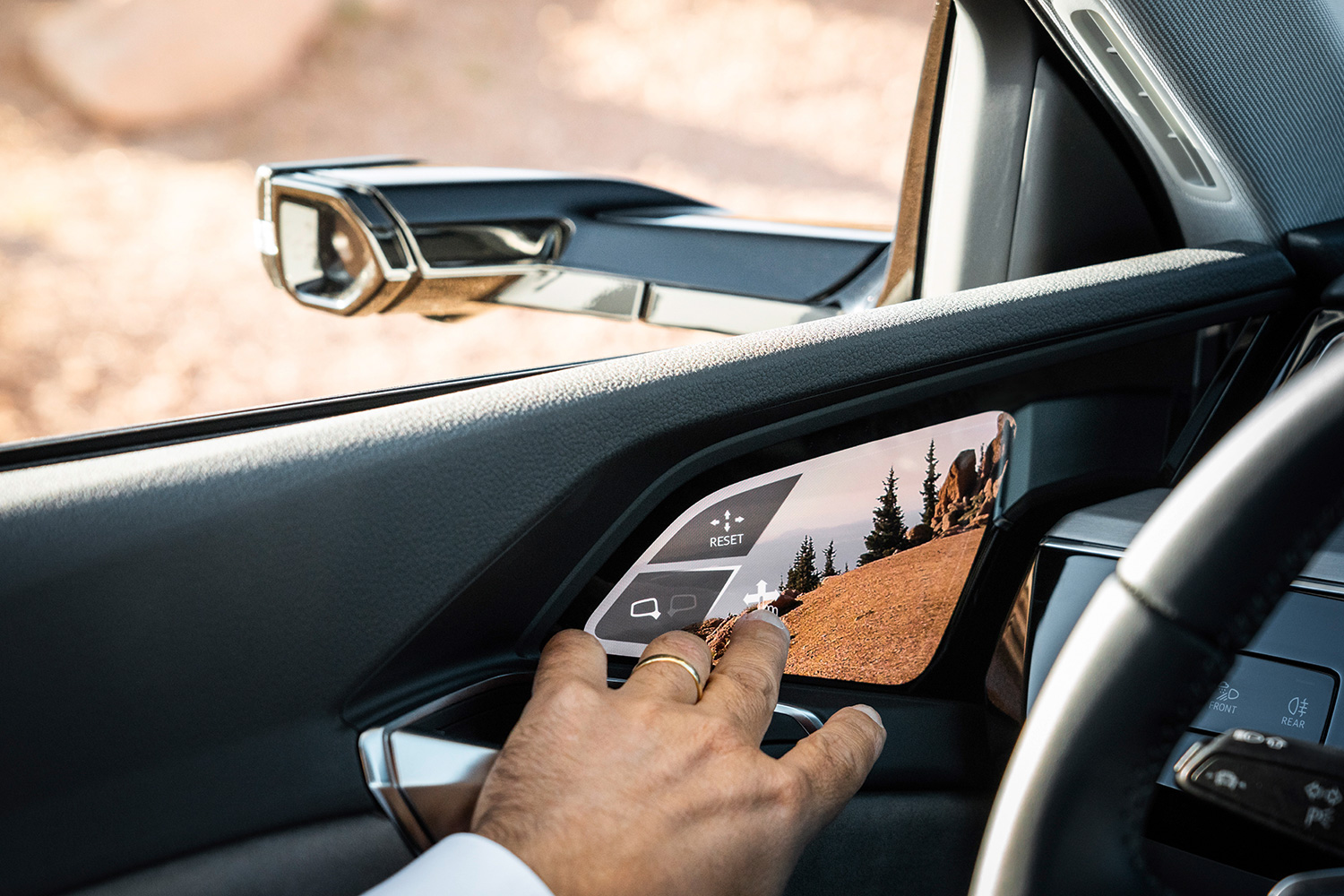A convoy of black SUVs climbs a winding mountain road. The journey is undertaken in the pitch darkness of predawn to avoid prying eyes. Despite appearances, we’re not on our way to a rendezvous with a Bond villain, although our quarry is just as secretive. We’re on our way to the top of Colorado’s Pikes Peak to meet the Audi E-Tron – the German automaker’s first mass-market electric vehicle.
Like other established luxury automakers, Audi was initially caught off guard by the success of Tesla and its high-end electric cars. Tesla may be moving down-market with its Model 3, but Audi’s E-Tron crossover aims high, choosing the Silicon Valley automaker’s Model X as its target. The move makes sense considering the swelling popularity of high-riding models. The E-Tron will also compete against the newly-launched Jaguar I-Pace and various electric cars promised by other luxury brands, including models made by Mercedes-Benz and BMW.
The E-Tron won’t be officially unveiled until September 17th, which is also the date Audi will begin taking orders for the new model. That meant our Pikes Peak sneak preview involved a prototype. While it was built to look, feel, and perform like the final production model, Audi is still making some final tweaks as it prepares to launch mass production. We weren’t allowed to drive the E-Tron, but we did get some first impressions of its performance and tech from the passenger’s seat.
Under wraps
The E-Tron prototype we rode in was covered in camouflage to hide its final shape. But, based on brief glimpses at images of the un-camouflaged final product, we can tell you that the camo isn’t hiding much. The E-Tron looks very similar to other recent Audi crossovers and SUVs, with a somewhat low roofline akin to so-called crossover coupes like the BMW X6 and Mercedes-Benz GLE Coupe, or even Audi’s own Q8. Audi claims a wind-cheating drag coefficient of 0.28, which is actually slightly better than the much swoopier Jaguar I-Pace’s 0.29, but not quiet as slippery as the Tesla Model X’s 0.25 cd.
Power comes from two electric motors fed by a 95-kilowatt-hour lithium-ion battery pack mounted under the passenger compartment. One motor powers each axle, giving the E-Tron through-the-road all-wheel drive. Together, the motors produce 300 kilowatts (402 horsepower) and 413 pound-feet of torque, which Audi claims will get the circa-4,000-pound E-Tron from zero to 62 mph in less than six seconds. Top speed is electronically limited to 124 mph. As with all electric cars, the E-Tron’s instant torque makes for quite a kick. When our driver floored the right pedal, the acceleration was almost painful, although it quickly tapered off.
When our driver floored the right pedal, the acceleration was almost painful, although it quickly tapered off.
Range is estimated at 400 kilometers (248.5 miles) on the European WLTP testing cycle. U.S. EPA figures are not available at this time.
We can’t make a direct comparison without a precise zero to 60 mph time or range figure, but E-Tron does seem to be in the same ballpark as its rivals. Jaguar estimates 240 miles of range for the I-Pace, while the base Model X 75D (with a 75-kWh battery pack) is rated at 237 miles. But Tesla also offers a 100-kWh battery pack good for 295 miles of range in the Model X 100D. The I-Pace will do zero to 60 mph in 4.5 seconds, according to Jaguar, while Tesla claims every version of the Model X will do the job in less than five seconds (the P100D being the quickest at a scorching 2.9 seconds).
Forbidden tech
In the automotive world, the term “forbidden fruit” denotes cars that aren’t available in one’s home country. The rally-bred Lancia Delta Integrale is a stellar example of one. We think the term is also appropriate for the E-Tron’s suite of tech features, as many of the most attention-grabbing items won’t be available in the U.S. at launch due to regulations.
Besides its electric powertrain, the most significant thing about the E-Tron is its use of cameras instead of side-view mirrors. Nearly every automaker has talked about doing this at one time or another, but Audi is the first to try it on an actual production car. Why is that a big deal? Camera pods are smaller than mirrors, helping improve aerodynamics and, consequently, driving range. Audi also expects an improvement in visibility over conventional mirrors.
The camera feed is shown on screens built into the doors. The picture looked clear enough to serve as a suitable mirror substitute, but that means the driver has to look a bit further down than usual, which may prove awkward in real-world driving. We’ll reserve final judgment for after we get behind the wheel, though. Another thing we noticed was that, while they do take up less space than conventional mirrors, the camera pods don’t blend seamlessly into the bodywork, as many recent concept cars might lead you to believe is the case with these things.
Many of the E-Tron’s most attention-grabbing items won’t be available in the U.S. at launch.
However, none of this is relevant to U.S. buyers because the camera-mirror system won’t be available here at launch. Audi is still working on getting the technology approved by regulators and doesn’t have a firm timeline for U.S. availability.
The E-Tron is also equipped with cameras, radar, and lidar—the trifecta of sensors many automakers view as the foundation for self-driving cars. However, the U.S.-spec model won’t break any new ground when it comes to driver-assist features. Audi is promising adaptive cruise control with limited steering assist and nothing more. The automaker offers the more sophisticated Traffic Jam Pilot system, which allows the car to take over steering, acceleration, and braking in traffic jams, on the A8 sedan in other markets. Again, the system won’t be offered in the U.S. due to concerns about the lack of clear regulations and the potential for confusion about the capabilities of the system.
First ride impressions
For a vehicle that supposedly represents the future of its maker, the rest of E-Tron feels remarkably ordinary. That’s not a bad thing though.
The MMI infotainment system, with its vast expanse of screens, looks futuristic, but it’s similar to the setup used in the latest-generation Audi A7 and A8 as well as the Q8 crossover. That means you get lovely graphics, an easy-to-use interface, and piezoelectric touch points that replicate the feel of analog buttons. The rest of the interior is fairly unremarkable in design, with lots of plastic trim punctuated by strips of metal. We did like the orange contrast stitching in our prototype vehicle and found front and rear headroom and legroom to be plentiful.
Audi took us to Pikes Peak, sight of a famous hill-climb race the brand once dominated, and where sibling brand Volkswagen recently set a record with an electric car, primarily to show off the E-Tron’s regenerative braking system. Every production electric car uses regenerative braking, which recovers energy normally lost as heat to recharge the battery pack. But Audi’s system combines the regenerative and friction brakes into one seamless operation. Marko Hörter, the engineer in charge of developing this integrated braking system, said 90 percent of deceleration in real-world driving could be handled using regenerative braking. In other words, you’ll only need to touch the brake pedal 10 percent of the time.
For a vehicle that supposedly represents the future of its maker, the rest of E-Tron feels remarkably ordinary.
To prove his point, Hörter drove us down from the summit of Pikes Peak — descending 6,352 feet and negotiating over 100 turns — and only used the regular friction brakes to decelerate once. The E-Tron offers three levels of regeneration, including one that allows the car to simply coast without decelerating. Even in its most aggressive setting, we found the deceleration to be less severe than in a Tesla Model S or Model 3. In those cars, once you let off the accelerator it feels like a drag chute has been deployed from the rear bumper. The E-Tron’s luxurious-feeling ride quality also impressed us, as did its cabin, which is quiet even by electric car standards.
More to come
Our first impression of the Audi E-Tron is that of a pretty ordinary crossover that just happens to have an electric powertrain and a few notable tech gadgets. But a dose of ordinary may be exactly what electric cars need to move past the early adopters and become truly mainstream. We’ll find out for sure in the coming months. Audi will unveil the E-Tron in San Francisco on September 17th, and can’t wait to get some seat time at some point after that.
